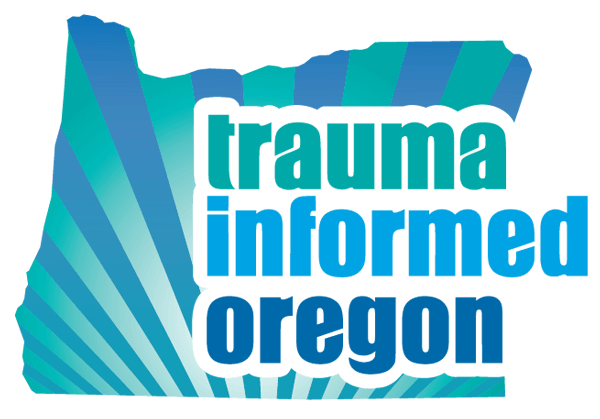Assess
Throughout the process of TIC implementation, organizations will be taking note of what they’ve done and what changed as a result. TIC will look different in each setting, so the outcomes used to monitor progress need to reflect the work and priorities for each organization. Assessment can seem like something you do at the end of the project, but it’s most effective when built into each phase. This provides the organization real time information about the difference TIC makes as well as areas for needed course correction.

 Changes to policy, practice, or environment are documented.
Changes to policy, practice, or environment are documented.
What does it look like?
Although an organization could be trauma informed without making any modifications, most often changes to policy, practice, and environment are needed. In order to understand the impact of these changes, it’s important to keep track of what they are.
How do you measure?
This action requires documenting TIC changes to policy, practice, and environment. Whether the workgroup includes this information in meeting notes or keeps a table of changes made, it is important that the process is updated and maintained. It’s easy to lose track of what has been done. A periodic focus group with workgroup members or a brief survey can also be used to note change.
 Impact of TIC changes is evaluated for staff and service recipients.
Impact of TIC changes is evaluated for staff and service recipients.
Relates to Standard Vh in the Standards of Practice
What does it look like?
The impact of TIC on staff and service recipients is an important focus for research. While there are long term outcomes to health and wellness that likely will change as a result of TIC, we are also aware that there are necessary changes that must happen first. As a result of TIC, people will probably have a different experience. Understanding this experience is the essence of this action. We think of this as the “consequence of TIC.” Service recipients and staff will,
How do you measure?
Research in this area is actually pretty challenging. First, and most importantly, research needs to be done to confirm (or support) that these are the values (safety, empowerment, trust) that will be influenced by TIC. Perhaps there are others.Secondly, once the values are identified, how will we understand the experience of staff and services recipients? One might think you could simply ask someone if they feel safe or empowered or valued. However, because people will naturally interpret these concepts differently (safety to me will be different than safety to you) using different frames of reference (I might be reflecting on my sense of safety today whereas you are thinking about your sense of safety overall), it becomes really important to be clear and specific about what you mean. It’s necessary to make this abstract concept as concrete as possible. Stay tuned.
 Impact of TIC Changes is evaluated in the organization or system (e.g., org level data).
Impact of TIC Changes is evaluated in the organization or system (e.g., org level data).
Relates to Standard Vh in the Standards of Practice
What does it look like?
It’s too early in the development of TIC to know which outcomes will be impacted by this approach. TIC is often described as an engagement tool; therefore, it’s reasonable to hypothesize that measures of engagement and satisfaction might be impacted by TIC. These short term outcomes generally precede longer term outcomes in health and wellness (mental, physical, and social). Think about the goal to increase high school graduation. In order for this metric to improve, students need to attend school and complete the necessary work. A trauma informed school environment would most directly influence whether the student wanted to attend, and the attendance would most directly affect graduation. Therefore, TIC likely influences longer term outcomes by first improving engagement and satisfaction.
How do you measure?
As described in this section, TIC most likely impacts engagement and satisfaction with services which then impacts longer term outcomes for health and wellness. In addition to tracking client and agency outcome data, think about tracking data that reflects engagement and satisfaction within your service system. The following are examples of indicators to consider.
Bring the Road Map to life with the following agency examples. Since 2015 three agencies have partnered with Trauma Informed Oregon to implement trauma informed care:
- In the fall of 2015 Trauma Informed Oregon invited Clackamas Behavioral Health Centers (CBHC) to serve as a demonstration project for the implementation of trauma informed care. Read the Final Report to see what they did, and be sure to check out their Trauma Informed Care Initiative Timeline.
- La Pine Community Health Center in Central Oregon began working with Trauma Informed Oregon in 2015 as another demonstration site. Read the progress reportto learn how they are implementing trauma informed care in a rural community healthcare setting.
- In early 2016 the Department of Family Medicine at the Oregon Health & Science University (OHSU) formed a partnership with Trauma Informed Oregon to initiate an implementation project for trauma informed care at the Richmond Clinic. Read the Final Report to see how they implemented trauma informed care through a shift in the organization’s culture, policies, practices, and procedures.

 Changes to policy, practice, or environment are documented.
Changes to policy, practice, or environment are documented. Impact of TIC changes is evaluated for staff and service recipients.
Impact of TIC changes is evaluated for staff and service recipients. Impact of TIC Changes is evaluated in the organization or system (e.g., org level data).
Impact of TIC Changes is evaluated in the organization or system (e.g., org level data).